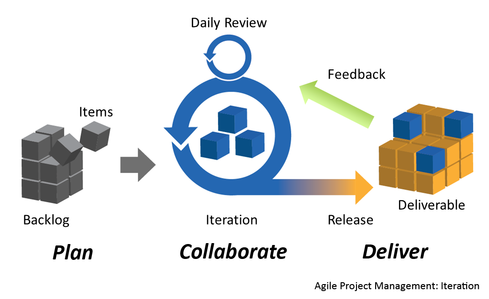AWS Service Migrates 1,000 Database Systems Into CloudAWS Service Migrates 1,000 Database Systems Into Cloud
The AWS Database Migration Service, which the company announced in October, officially came out of preview phase on March 15, after importing 1,000 on-premises database systems.


8 Steps For Creating An Agile Enterprise
8 Steps For Creating An Agile Enterprise (Click image for larger view and slideshow.)
Amazon Web Services announced that it has migrated 1,000 database systems into its cloud using the AWS Database Migration Service. The service was first announced Oct. 7 at Re:Invent 2015 in Las Vegas and, after a five-month preview period, became generally available March 15.
One-third of the 1,000 migrations were not only a move from on-premises into the cloud but also a switch from one database system to another, according to Hal Berensen, AWS VP of relational database services, in an announcement March 15.
While Amazon didn't describe most of the migrators' trajectories or experiences on Tuesday, two of them, Expedia and Thomas Publishing, said they were moving off internal proprietary systems onto the AWS Aurora relational system. Aurora was introduced at Re:Invent in 2014 as a large-scale, distributed version of open source MySQL available as an online service.
Thomas Publishing is a 100-plus year old company that uses Oracle systems in publishing information that connects industrial suppliers to buyers. Thomas was dealing with constantly increasing amounts of data and was "intrigued by the possibilities when we first learned about Amazon Aurora," said Hans Wald, the company's CTO.
The alternative was turning to more Oracle systems "requiring significant upfront investment in both infrastructure and Oracle license expense," Wald wrote in the Amazon announcement.
At first the company believed "the magnitude of the effort to migrate legacy PL/SQL code seemed to rule out" migrating to the cloud, he noted. But when Amazon announced its Database Migration Service, that move "caused us to take another look at this problem, and after careful evaluation, we demonstrated that the AWS Database Migration Service automated most of the work and dramatically reduced the manual effort involved in the code migration."
Because the moves can be automated, Thomas plans to move more database systems to Amazon Aurora in 2016, according to Wald.
The migration to Aurora can be automated in part because Amazon came up with a relational database schema conversion tool at the same time that it announced its migration service. Schema differences between systems are one of the chief complicating factors in a database migration, and Amazon is the first to claim to address it from the cloud.
Like Thomas, many of the migrators moved more than one system to AWS, so the number of customers who have actually migrated into AWS is smaller, somewhere in the "hundreds," as opposed to the 1,000 systems referred to in the announcement, AWS said.

Learn to integrate the cloud into legacy systems and new initiatives. Attend the Cloud Connect Track at Interop Las Vegas, May 2-6. Register now!
Travel website Expedia said in a statement that it also moved some of its internal systems to AWS Aurora.
"The ability to closely monitor the process, the detailed logging feature, and the support we received from AWS have given us a great deal of confidence in a successful migration," wrote Kuldeep Chowhan, principal engineer at Expedia, in the release.
A third customer named as moving databases was Pegasystems, a producer of sales, marketing, and service applications, but its statement didn't indicate what system it adopted in the AWS cloud.
Willy Fox, VP of cloud product and commercialization, noted that Pegasystems tested the migration service thoroughly before using it. The testing found that the service "reduced the manual effort and time required to migrate applications from various stand-alone databases to AWS-powered datastores." With Amazon maintaining those database systems, Pegasystems was relieved of the operational responsibility for its own variety of systems.
Still, two-thirds of the customers didn't switch to a different system.
Instead, they migrated from an on-premises system to the same system in the AWS cloud. Those options included: Oracle, Microsoft SQL Server, open source MySQL, open source MariaDB (a high performance version of MySQL), and open source PostgreSQL (an Oracle-compatible system).
In addition, customers had the option of adopting AWS's Relational Database Service (RDS).
Amazon has made the Database Migration Service available through the AWS Management Console, a familiar workstation interface to existing Amazon users. The Database Migration Service, however, is only available in certain AWS locations. They include: US East (Northern Virginia); US West (Oregon and Northern California); EU (Dublin and Frankfurt); and Asia Pacific (Singapore, Sydney, and Tokyo). Berensen said the service will expand to additional regions later this year.

About the Author
You May Also Like






